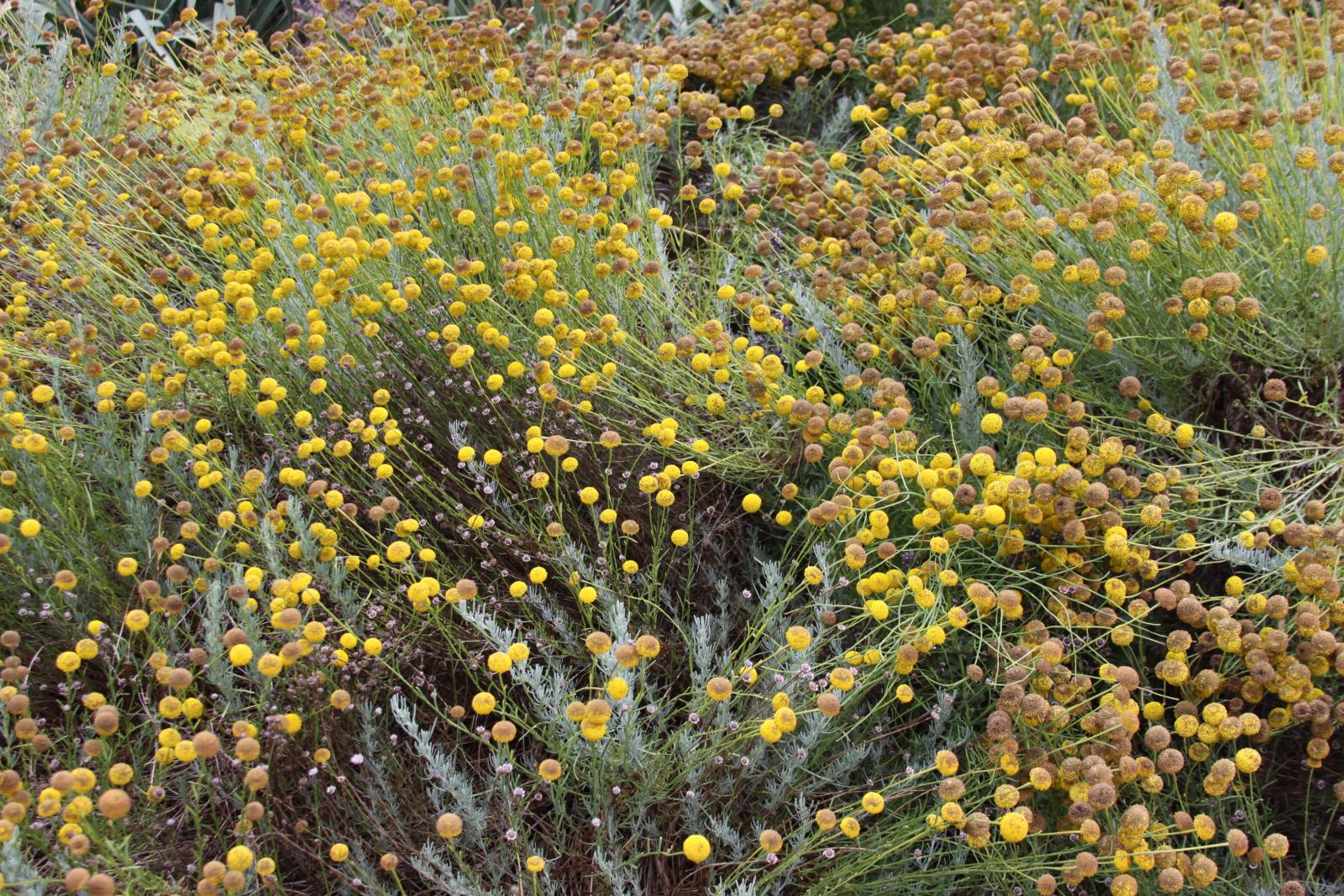Santolina
|
Family: Asteraceae |
Subshrubs, [5-]10-60 cm (sometimes ± rhizomatous; aromatic). Stems usually 1, ± erect [decumbent to ascending], branched mostly from bases [± throughout], often tomentose to lanate, sometimes glabrate or glabrous [sericeous] (hairs mostly medifixed) and gland-dotted. Leaves cauline [mostly basal]; alternate; petiolate or sessile; blades narrowly oblong or spatulate to linear, usually 1-pinnately lobed (lobes usually crowded and overall effect ± vermiform), ultimate margins entire or ± crenate, faces usually arachnose or tomentose to lanate, sometimes glabrate or glabrous [sericeous]. Heads discoid, borne singly (pedunculate). Involucres campanulate to hemispheric or broader, [3-]6-10[-12+] mm diam. Phyllaries persistent (soon indurate), 18-45+ in 3(-5+) series, distinct, lanceolate to elliptic (usually carinate), unequal, margins and apices (usually light to dark brown, sometimes purple) scarious (abaxial faces glabrous or ± arachnose, glabrescent). Receptacles convex to hemispheric, paleate; paleae ± lanceolate, ± navicular (each with central resin duct). Ray florets 0. Disc florets mostly 60-250+, bisexual, fertile; corollas pale to bright or deep yellow [whitish], tubes often compressed (± winged and/or saccate, ± clasping apices of cypselae), throats ± funnelform, lobes 5, lance-ovate. Cypselae obconic to obovoid, sometimes slightly obcompressed, 3-5-angled, faces glabrous (pericarps sometimes with myxogenic cells, without resin sacs); pappi 0. x = 9. Heads discoid, the fls all tubular and perfect, or the outer rarely with abortive anthers; invol bracts imbricate in several series, dry, scarious on the margins or throughout; receptacle convex, chaffy throughout; style-branches flattened, truncate, penicillate; achenes evidently 3-5-angled, glabrous; pappus none; aromatic subshrubs, branched at the base, with alternate, pectinate or pinnatifid lvs and small or middle-sized, long-pedunculate, hemispheric yellow heads. 10, Mediterranean. Gleason, Henry A. & Cronquist, Arthur J. 1991. Manual of vascular plants of northeastern United States and adjacent Canada. lxxv + 910 pp. ©The New York Botanical Garden. All rights reserved. Used by permission. |

